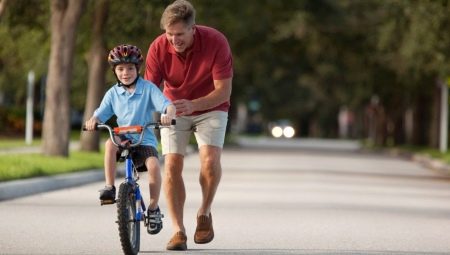The bicycle has become an integral part of the life of children, athletes and all adherents of HLS. Nowadays, children sit on it from almost a year old: the very first bike with a parental handle allows kids to see more interesting things while walking, and the two-wheeled models that older children ride help to improve health. Riding a bike is not only useful, but also fun. However, the baby is unlikely to be able to learn to manage a bike without the help of parents.
At what age can I start?
Riding a bicycle develops children's agility, as well as increases their endurance and physical strength, strengthens the muscular frame. In the process of movement, oxygen and organs are actively saturated with oxygen and their blood supply is significantly improved.
Scientifically proven that cycling helps to strengthen immunity and accelerate metabolism, that is why cycling is often prescribed for sick children and overweight children. Using an “iron friend” can be an excellent prevention of myopia in children and corrects vision with astigmatism.
Of course, cycling with friends and relatives improves mood, charges children with positive emotions and allows them to spend fun time with their friends.
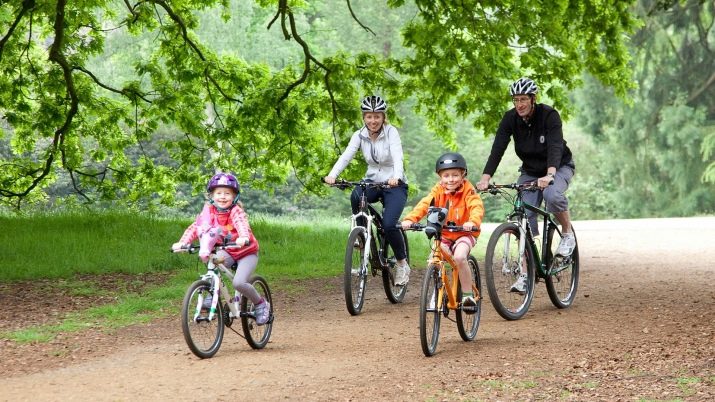
You can learn to ride a bike at any age, but the sooner the kid learns this science, the less difficulties he will have with the coordination of movements in the future. The first acquaintance with the bike usually occurs in 1-1.5 years, during this period the models with a parental handle and a comfortable stand are optimal, at the age of 2-3 years they are replaced by three-wheeled products, and as they hone skills change to models with two wheels .
There is an opinion that the erratic movements of three-year-olds are nothing more than a game. However, this is not so; at this stage, the real development of riding skill is taking place.
The guys who have already mastered the science of turning the steering wheel in three-wheeled vehicles, then feel much more confident when changing to 2 wheels.
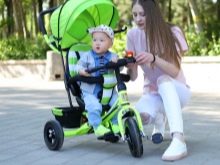
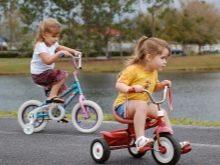
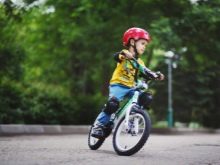
When teaching a child cycling skills, it is important to solve several important tasks at once:
- instill confidence in their own abilities in the crumb, help him overcome a set of failures and fears;
- teach the child to simultaneously press the pedals and at the same time turn the steering wheel in a given direction;
- achieve equilibrium.
At first glance, it may seem that this task is difficult and impossible. However, there is no need to worry - learning how to manage a bike is not at all difficult if you adhere to the principles of a phased and systematic approach.
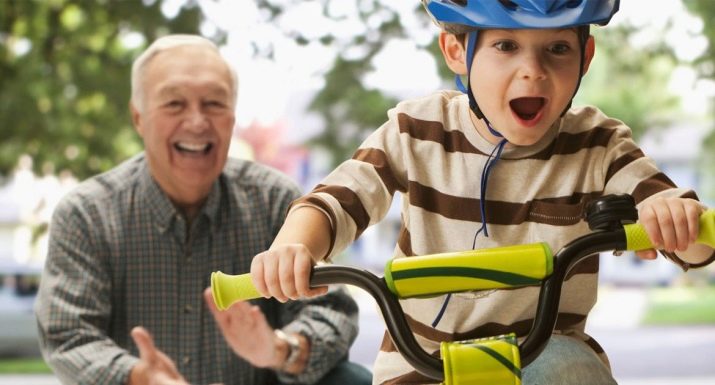
Safety Rules for Skating
Keep in mind that at first training is difficult, they are accompanied by falls, constant bruises and wounds, as a result, bitter tears of crumbs. Therefore, it is extremely important for parents to take care of safety issues in advance, even when you plan to start with the development of three-wheeled vehicles. At first, the child must certainly wear all the necessary personal protective equipment, he needs to get a helmet, as well as comfortable elbow pads and necessarily knee pads.
When buying personal protective equipment, make sure that the helmet is not small, but not large, and the chin strap is freely adjustable for the diameter of the head. Wear them whenever you go to workout.
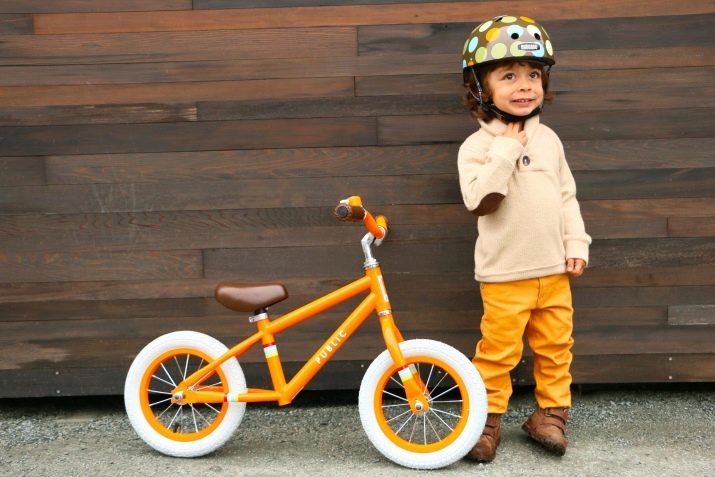
Pay special attention to shoes. - it should be athletic, tightly wrapping legs. It is best that the sole is elastic, but at the same time wide and non-slip, otherwise you will not be able to achieve reliable grip with the pedals. Do not allow your baby to ride without shoes, in shales or in sandals - if suddenly the foot accidentally jumps off the pedal, then the baby can very noticeably hit your toes. And, of course, the bike itself must meet all basic safety requirements, namely:
- comfortable steering wheel and comfortable seat;
- smoothness of movement;
- increased maneuverability;
- reliability of the materials used.
The bicycle should not have any protruding corners and knitting needles that the baby might scratch about, exclude plastic elements - young children often tear pieces away from them and accidentally swallow them.
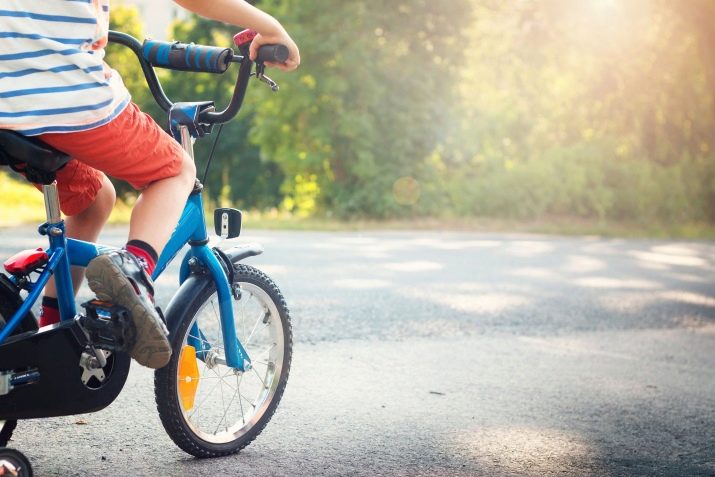
Tricycle training
Now that you have everything you need for training, you can begin to develop riding skills on three-wheeled vehicles. We pay attention to the fact that the bike must match the height of the baby. It is very simple to make sure of this: let the child sit on the bike if his legs reach the pedals and at the same time he will be able to stand on the ground with his whole foot - therefore, the bike is correctly selected.
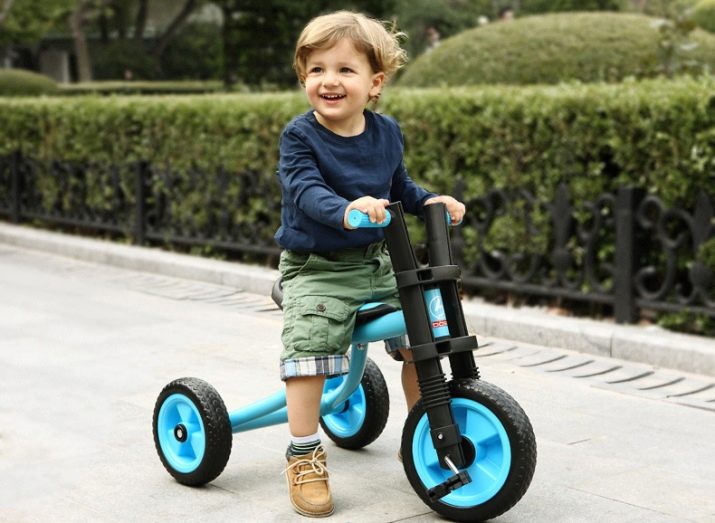
Do not rush things. Let the crumbs first get to know their “iron friend” well, consider their new acquisition, feel it, study it, and perhaps even play with it. Only after the baby is comfortable, invite him to sit behind the wheel. It is advisable to make the very first attempts to travel by bicycle at home.
If your bike is additionally equipped with a parental handle and a comfortable footrest, it is advisable to take the child for long walks by manually controlling the bike for a while, so the child can quickly get used to the new option of moving around the city streets.

When the child is ready to learn further, he begins to express his intention to pedal independently, if this does not happen, it is worth motivating the baby and encouraging him in every possible way. How you will do this depends only on the child himself, his age, hobbies and character. Be sure to show him exactly how these very pedals turn, how to place their feet on them and how they should be pressed.
Best of all, as the main training ground at this stage of training, a stadium or school yard will suit you, because at this time the child needs an arena, not a track. His attention will be fully focused on the pedals, because he will move forward, not taking the path.
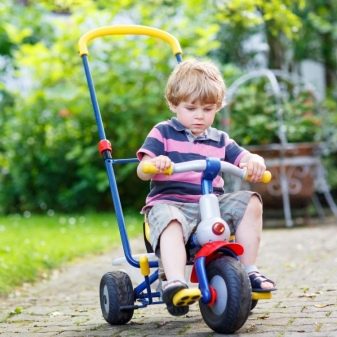
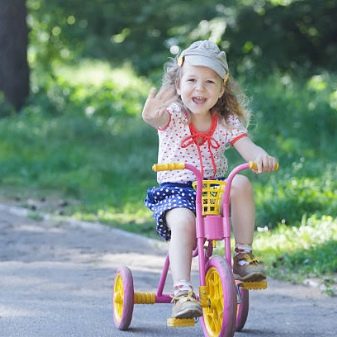
The basics of driving and steering will begin to be acquired by the peanut only after it has been brought to automaticity when the bike is set in motion using pedals. Some parents, on the contrary, first focus on controlling the bike and only after that proceed to the study of pedals. If you think this option is more effective, then you can try to build training according to your own scheme, the main thing is the principle itself - in any case, the child will not be able to ride and steer for the first time.
One way or another, these skills will have to be taught in stages.
Please note: children's training should not last more than half an hour. If your baby is tired or for some reason does not want to continue classes - postpone them until the moment when he has the appropriate mood. Make sure the bike matches the gender and hobbies of the child. For girls, you can choose delicate pink and white models, for boys - dark blue, red or green. Be sure to decorate them with pictures of your favorite characters.
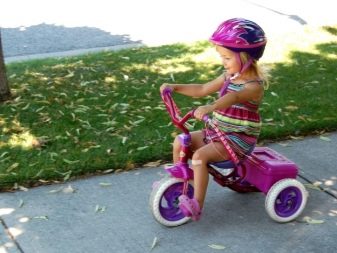
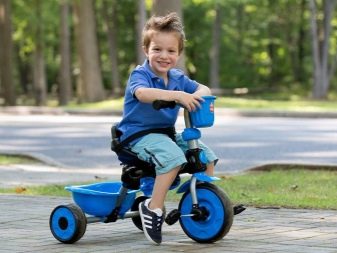
Mastering a two-wheeled bicycle
Many mothers and fathers in transition are trying to use side wheels. Of course, the decision is only yours, perhaps this tactic is suitable for someone. However, parental experience and numerous reviews indicate that after these wheels are removed, parents and little cyclists will still have to spend a lot of time in order to learn how to move and maintain balance.
After a tricycle, it is advisable to transfer children immediately to 2 wheels.

So that the baby can feel what equilibrium is and how to keep it right, you can use a ranbike or scooter. If you don’t have either one, you can remove the pedals from the 2-wheel for a while. Agree, without pedals this is almost the same ranbike. Moving forward, the child will begin to push off with both legs at once, a similar riding option will help him to feel the form of transport that is unusual for him and learn to manage it effectively.
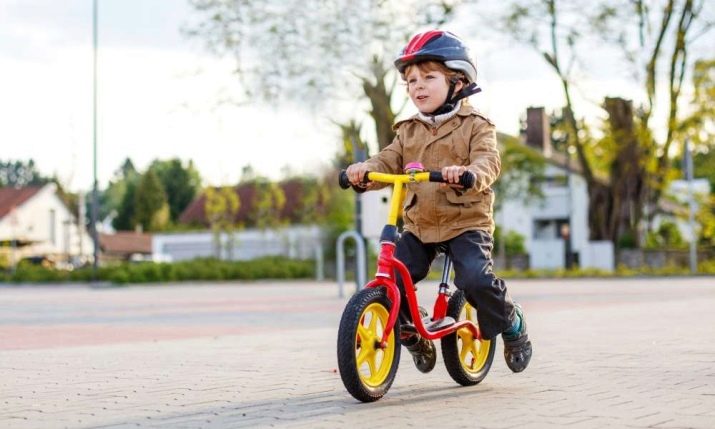
After that, one pedal can be returned back - in this way you get an alternative to a scooter. The child accelerates, while pushing with one foot, and the other - rests on the pedal and moves, practicing his skill to maintain balance.
After that comes the very moment when the second pedal can also be put in its place and already try to ride a two-wheeled bike with the support of a trainer. For those guys who started with a three-wheeled bike and went through all the stages listed above, this stage in fact turns out to be the shortest.
When teaching a child how to ride a bicycle, be sure to have first aid equipment at hand.
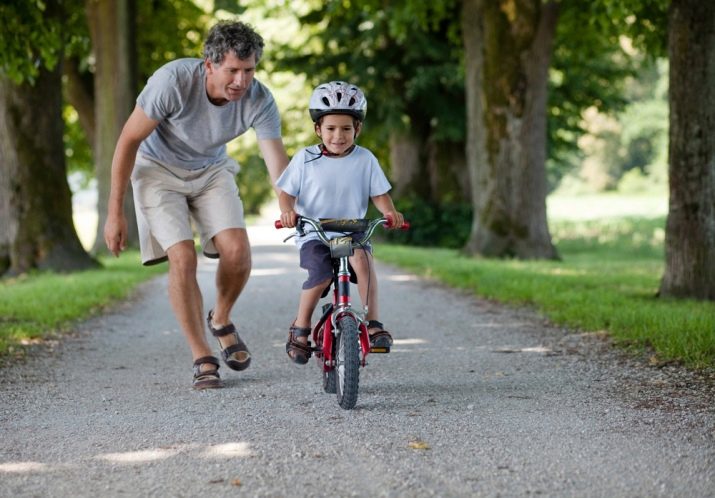
Useful Tips
In order for a child to learn one or another skill, he will need psychological support from adults and learning to ride a bike was no exception. At this stage extremely it is important that children have a strong motivation: it may be a desire to go for a bike ride with your parents or an opportunity to arrange a little competition with friends.Often, crumbs are inspired by films with athletes or favorite cartoon characters who ride a bike.
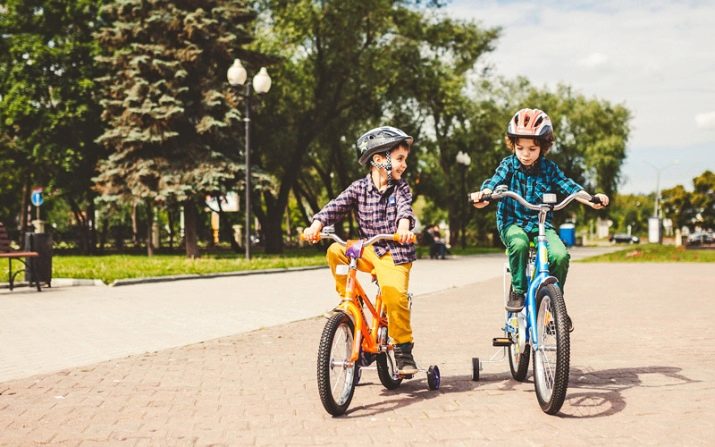
If there are two or more children in your family, the oldest of them should be trained to start driving - then others, looking at him, will also want to ride. At first, when a child is just starting to learn a three-wheeled bike, the parent or trainers should always stay close to him and carefully monitor that your baby does not fall - it is extremely important for him to overcome the psychological barrier and get rid of the fear of failure.
At the initial stage of training, you must constantly be on the side of the baby, be sure to hold it by the shoulders, elbow or straps of suspenders or simply by shivorot. As soon as your child learns to gain speed and move without stopping, you can hold the bike by the saddle.
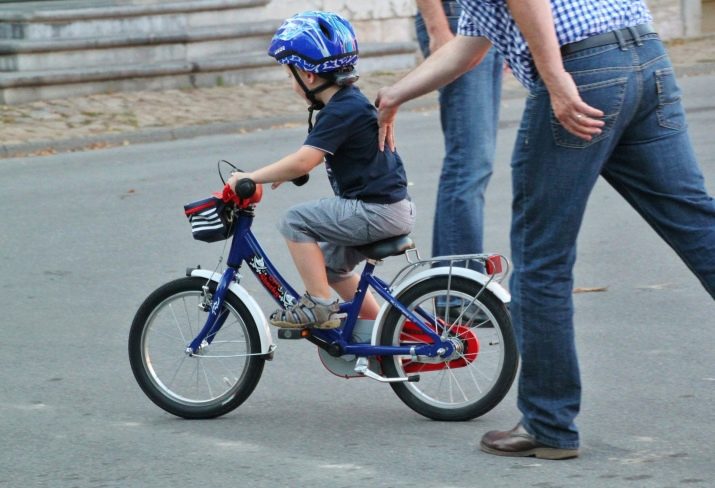
You mean, often for a crumb it’s not fundamentally important that you actually take the lion's share of managing the bike, but simply the fact that your parents are nearby and can insure it in case of an unforeseen situation. We advise you to take a small trick: when you realize that your baby is already able to confidently hold the steering wheel and pedal continuously - keep it not so hard. Let the child, as before, it seems that you are near him. However, he will already do all the main work on his own, without even realizing it.
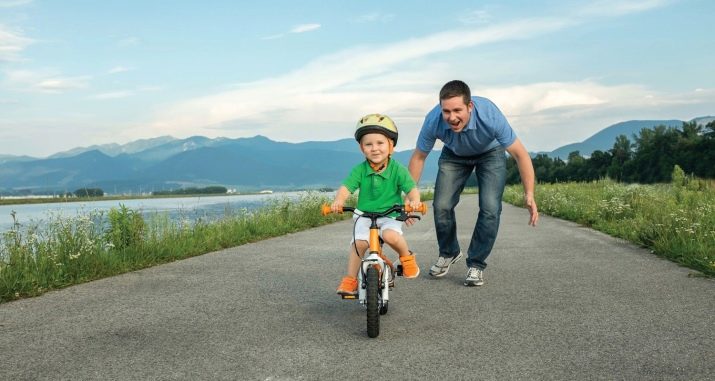
After all the most difficult things are behind, all that remains is to hone the speed of the reaction. In order for the child to be able to navigate without problems in difficult unforeseen situations that often happen when traveling, he needs to learn how to brake the bicycle. Even at elementary venues such as a stadium or a well-equipped bike path, a child can get confused and simply miss control from such trifles as a dog running across the road, a ball falling nearby, a pedestrian walking nearby.
Make sure your child copes with braking.. Train with him: try several times to block the path in front of a young cyclist and see what he does - immediately apply the brake or panic. It depends on the child’s editorial office in many ways whether you can let him go on independent trips or if you still need to continue joint classes. It is very important to encourage the crumb, to positively evaluate his slightest successes and, in case of failure, to convince that everything will definitely be fine. Only in this case will training be effective.
To learn how to teach a child to ride a bicycle, see the video below.
